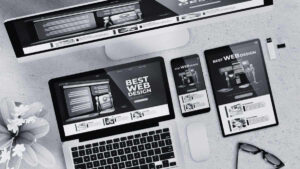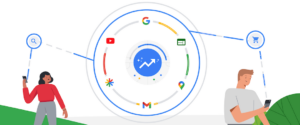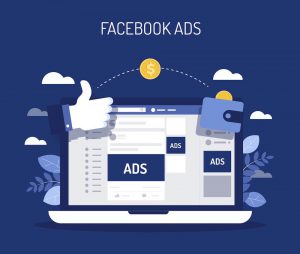Put the customer first! That has been for a long time the mantra in e-commerce. It is so obvious and widely (ab)used in e-commerce trend reports.
But even though we know this, in the hunt for higher margins and more market share, the wishes of the customer are still regularly relegated to the background. Nevertheless, in 2020 it will be more important than ever to have a clear understanding of the customer’s needs. If your customer experience does not live up to expectations, a better alternative will be available within a few mouse clicks.
10 e-commerce trends to watch in 2020
It should, therefore, come as no surprise that consumers are currently dictating the changes in online shopping. The continuous growth of the search term “customer experience” over the past five years according to Google Trends illustrates this nicely.

The value of the customer experience is constantly increasing. Partly due to the importance of repeat purchases and good customer reviews. The trends we describe in this article therefore all relate to the customer’s buying experience and the technology behind it.
But what does customer experience mean? And how do you deal with that in practice? In this article, we try to answer these questions by looking at the growing popularity and increasing importance of unified commerce, the offline experience and consistent brand values.
- Unified Commerce
- Offline experience
- Delivery
- Consistent brand values
- It’s all about the customer experience
Unified Commerce
Recent research by Deloitte clearly shows that consumers are channel-agnostic (pdf). They hop from one point of interaction to another. Whether it is an Instagram advertisement, a pop-up store or a voice wizard search. To make things even more difficult, the number of touchpoints is rapidly increasing, both in terms of availability and adoption by the general public.
Trends like chatbots and technologies like augmented and virtual reality are interesting ways to stand out and reach the customer. But at the same time, they add even more complexity to the web of touchpoints. Despite the increased complexity, customers still demand a seamless experience when they decide to switch from one channel to another.
A seamless shopping experience is no longer nice-to-have but essential. Still, it’s not always easy to break away from the traditional approach, even if you focus on new ways of customer interaction. For example, marketing budgets are often reserved for tried and tested channels. 2020 is the year to shift your marketing spending. From traditional channels to an approach that meets the digitally flexible customer.
Trend 1: Attention to the whole ecosystem
Do you really want to be able to focus on the customer experience? Then you will have to say goodbye to a channel-specific, offline versus online, marketing strategy. Instead, look at the bigger picture. Focus on the end result. Then zoom in on how you can optimize each individual channel. And how to offer a better, more holistic customer experience. As more and more companies choose this approach, there is currently a shift in the technologies that make e-commerce possible.
Many companies have started building modular platforms with a focus on the customer experience. This instead of relying on a single, monolithic e-commerce solution. A modular platform allows them to adapt their technology to the customer. Instead of having their approach dictated or limited by their software.
But a consistent buying experience is not the only wish the consumer has. He also expects the seller to know him completely. If this turns out not to be the case, he switches to another supplier with the greatest of ease. As many as 77% of consumers expect products and offers that are tailored to him or her personally.
Trend 2: A smooth, personalized customer journey
To show the right product to the right person at the right time, technology and data are indispensable. Think of targeted online ads. But also, for example, dynamic, relevant website content or useful information that is presented via a personalised app. Personalized, relevant communication has a clear focus for most brands. 92% even see personalisation as a top priority.
The next question, of course, is how to do this – accurately and scalably at the same time.
- First of all, you need a clean dataset to improve the accuracy of the relevant content.
- Secondly, the right technology to reach a large number of consumers.
The network of touchpoints encompasses every interaction a customer has with a brand – both online and offline.
Offline experience
The awareness that it’s not just about the online experience has sparked a comeback of physical stores. But with a rethink on the purpose of it. Instead of thinking that a physical store is simply a necessity for every business, you need to look at the unique qualities of both online and offline channels. Based on that, you can start optimizing both.
For example, many former online-only players have recently opened physical stores. But these stores are usually not focused on convenience and a wide range of products, but on providing an experience that is not possible online. Physical stores should be judged just like any other marketing tool: which segment of the audience does the store target? At what stage of the customer journey do you expect people to visit the store? The ultimate goal will not only determine the concept of the store but also how its success will be measured.
Trend 3: The physical store as an experiment
A physical store can be used to market a new product or new technology or service. Pop-up stores are a good example of this. For example, they allow online players to interact face-to-face with potential customers and collect direct feedback. And at the same time, they contribute to building the brand.
The most exposed example is Amazon Go. By opening this store concept Amazon can experiment with unmanned stores. This allows them to test the effectiveness of scanning with smartphones, automation and in-store robots, while at the same time generating a large amount of press attention.
Trend 4: The physical store as a human interaction point
The human element is one of the unique characteristics of offline shopping. Deloitte even claims that human interaction and engagement are the core factors of the overall shopping experience and customer satisfaction. The benefits of human contact can be combined with technology. For example, by equipping store employees with tools that make them central players in the field of brand experience.
For example, using a smartphone or tablet, a clean data set and a modern CMS, store employees can consult a customer’s previous purchases and see what content that person has read on the company’s website. Based on this information, the CMS can make automatic recommendations for products. And employees can show the customer exactly what he or she was looking for. Also, the employee can quickly look up whether a certain product is in stock or what colour options are available.
Trend 5: The physical store to experience products
Before we make a purchase, we all have a deep inner need to see and touch a product in real life. Only a physical store offers the unique opportunity to experience the product physically. Certainly desirable for products in a higher price segment. Also, a physical store gives companies that are only active online the opportunity to fully immerse consumers in their brand experience.
Brands that started online have discovered pop-up stores as a possibility to be physically present. Without the need for a larger, permanent store. Traditional retailers such as Calvin Klein and Macy’s have also embraced the pop-up phenomenon. This allows them to experiment with creative concept stores in the short term. Retailers like to use these kinds of options to emphasize their focus on customer experience. Something that strengthens the reputation of their e-commerce activities once again.
Delivery
An essential element of the offline experience is the delivery. This may not appeal to the imagination as much as a brand new store concept. But the delivery of a product is an essential part of the process. Customers quickly notice shortcomings and appreciate it when companies take an extra step.
According to a recent publication by the World Economic Forum on the transformation of e-commerce logistics, companies are focusing on the following tactics to make their delivery services above average: fast delivery, cross-border delivery, exploring new sectors and easy returns.
Trend 6: Fast delivery
I’m sure you’ve noticed that company delivery times are getting shorter and shorter. Delivery on the same day or even within two hours after the purchase is sometimes already possible. As a result, consumers are expecting more and more from companies in this area. Not only in terms of delivery speed but also when it comes to flexible delivery options. This has turned the sector quite upside down and ensured that logistics and operational processes are directly linked to customer satisfaction.
Trend 7: Cross-border supply
Cross-border e-commerce is growing rapidly due to the lack of physical boundaries on the internet. This development mainly concerns China. The size of the Chinese e-commerce sector is already huge. Western consumers are increasingly finding Chinese webshops. The growing Chinese middle class and their hunger for foreign products will further increase the size of the sector.
Trend 8: Exploring new sectors
The range of home delivery is rapidly expanding and now goes far beyond clothing and electronics. Consumers are increasingly beginning to see the benefits of ordering items such as cosmetics, pet supplies and food online. Just think of the online success of supermarkets.
Trend 9: Easy Returns
To give customers the aforementioned physical experience they desire, many e-commerce players make it easy to return products. In addition to simply offering this service (free of charge), they make it extra easy utilizing pre-printed labels, an automated refund of the purchase amount and the choice to return in the shop or by post. All this, of course, brings new challenges, such as high return costs and extra transport movements.
Consistent brand values
As you will have noticed, the central factor in all the aforementioned trends and developments is the brand experience. Your brand is what distinguishes you from the competition and what makes you recognizable for your customers. A consistent brand experience, regardless of the channel or choices you make, should therefore always be the starting point of your strategy.
Trend 10: A unique brand story
Consumers are increasingly attracted to brands that have a story to tell. They are looking for authentic brands that fit their personal lifestyle. A distinctive brand story helps consumers to identify with your brand in a way that extends beyond the product alone.
Retailers, therefore, do well to think about the values that can create a connection between their product and their customer. These brand values should be reflected in every aspect of the company, from the products to the corporate culture.
It’s all about the customer experience
Having a strong brand story, a consistent customer journey, meeting customer expectations in terms of delivery and returns, repositioning the physical store… It all boils down to one single factor that will determine the success of your business: creating a great, distinctive customer experience.
Companies that are now doing everything they can to create a great customer experience are sure to be ahead of new trends and developments in the years to come.

 Nederlands
Nederlands







